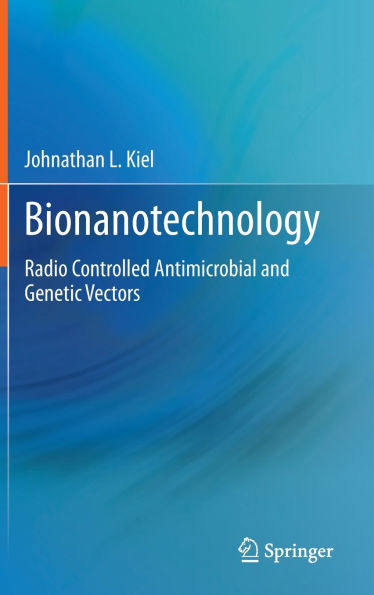Bionanotechnology: Radio Controlled Antimicrobial and Genetic Vectors
This book describes how methodologies in biochemistry, molecular and cellular biology, electromagnetic bioeffects, and nanotechnology were brought together to construct a nanostructure that is a composite of nucleic acid, carbon nanotube, paramagnetic metallic nanoparticles, and aromatic polymer that is responsive to nonionizing electromagnetic radiation, RFR to microwaves. It demonstrates that the construct can act as a redox catalyst accelerated by nonionizing electromagnetic radiation, and also as a conveyor of genetic modification of specifically targeted eukaryotic and prokaryotic cells. The scientific knowledge necessary to accomplish this is described and step-by-step progress supported by data and examples are noted. The general purpose is to show how such interdisciplinary approaches can lead to disruptive technologies. This book is most valuable to those (molecular biologists, vaccinologists, biomedical engineers, microbiologists) looking for more externally controllable gene vectors, antimicrobials, and antiparasitics, using a totally new nanoparticle platform. Those pursuing biological applications of nanotechnology will also be interested. This text has uniquely multidisciplinary approaches, drawing together chemistry, physics, molecular biology, biochemistry, and biomedical and electrical engineering.
"1145593724"
Bionanotechnology: Radio Controlled Antimicrobial and Genetic Vectors
This book describes how methodologies in biochemistry, molecular and cellular biology, electromagnetic bioeffects, and nanotechnology were brought together to construct a nanostructure that is a composite of nucleic acid, carbon nanotube, paramagnetic metallic nanoparticles, and aromatic polymer that is responsive to nonionizing electromagnetic radiation, RFR to microwaves. It demonstrates that the construct can act as a redox catalyst accelerated by nonionizing electromagnetic radiation, and also as a conveyor of genetic modification of specifically targeted eukaryotic and prokaryotic cells. The scientific knowledge necessary to accomplish this is described and step-by-step progress supported by data and examples are noted. The general purpose is to show how such interdisciplinary approaches can lead to disruptive technologies. This book is most valuable to those (molecular biologists, vaccinologists, biomedical engineers, microbiologists) looking for more externally controllable gene vectors, antimicrobials, and antiparasitics, using a totally new nanoparticle platform. Those pursuing biological applications of nanotechnology will also be interested. This text has uniquely multidisciplinary approaches, drawing together chemistry, physics, molecular biology, biochemistry, and biomedical and electrical engineering.
139.99
Pre Order
5
1

Bionanotechnology: Radio Controlled Antimicrobial and Genetic Vectors
174
Bionanotechnology: Radio Controlled Antimicrobial and Genetic Vectors
174
139.99
Pre Order

Product Details
| ISBN-13: | 9783031630057 |
|---|---|
| Publisher: | Springer International Publishing |
| Publication date: | 09/07/2024 |
| Edition description: | 2024 |
| Pages: | 174 |
| Product dimensions: | 6.10(w) x 9.25(h) x (d) |
About the Author
From the B&N Reads Blog
